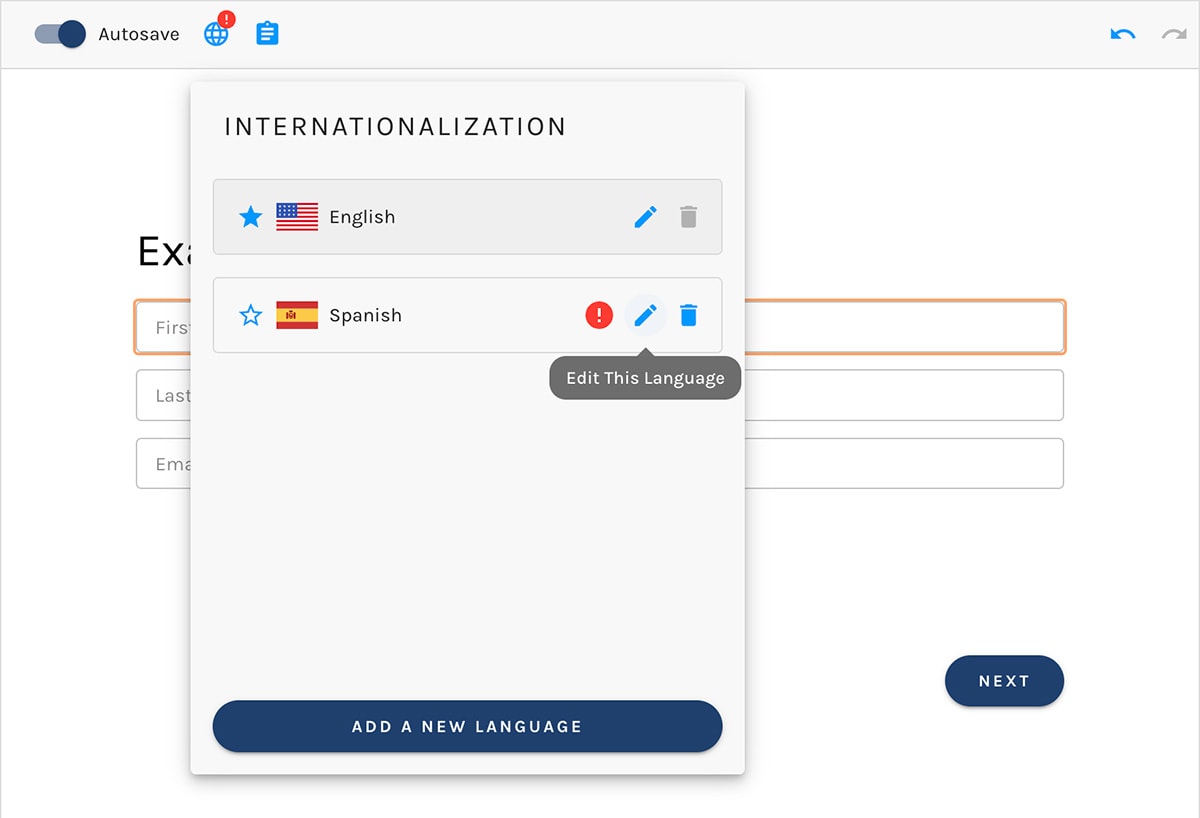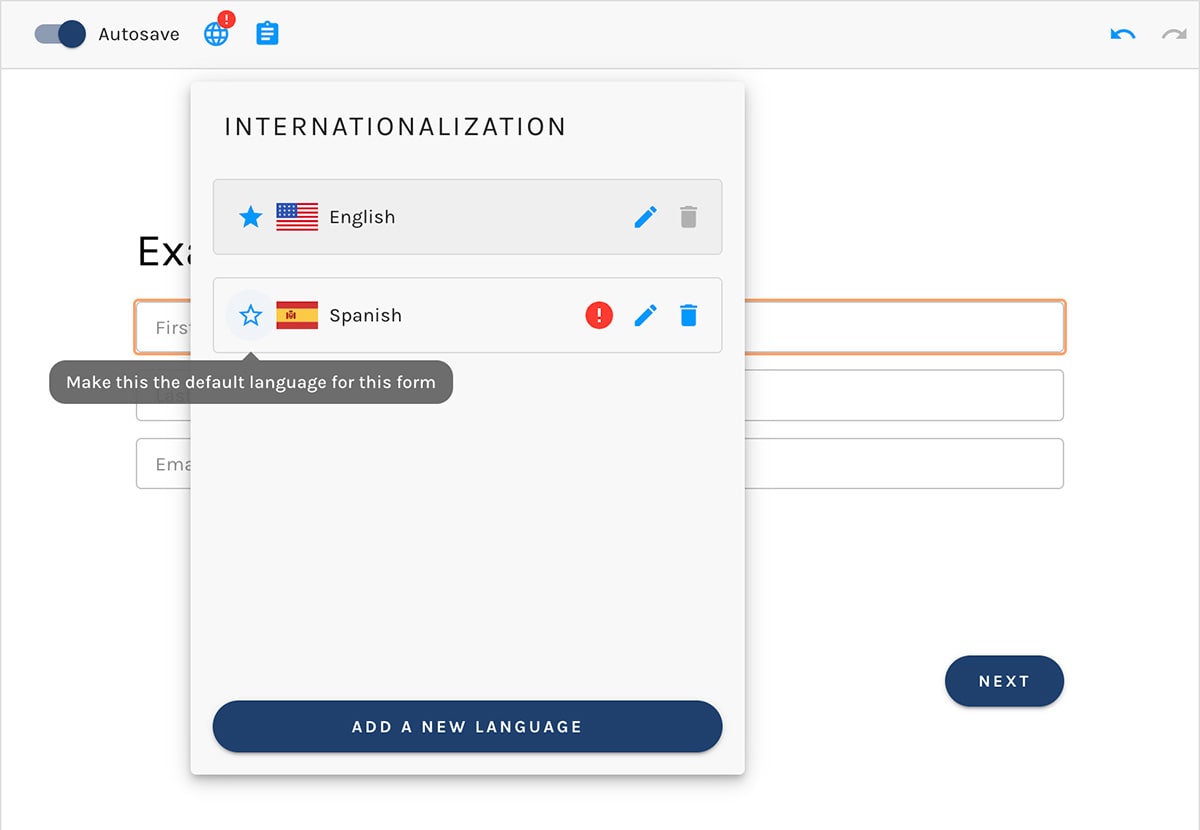Internationalization
Paminga enables you to translate your CTAs into any number of languages.
When providing translations, Paminga ensures completeness and prevents publishing of assets with incomplete translations.
Once translated, you can leverage your prospect's preferred language to show/hide sections, rows, and individual elements.
Internationalization:
Add a Language
Click the "Internationalization" icon (a globe) shown in the image above.
Click the "Add a New Language" button, and search for the language you'd like to add. You may add as many languages as you need.
Internationalization – Add a New Language:

Providing Translations
Paminga offers two ways for you to add translations to your CTAs:
The Set Language Dialog
The Set Language Dialog provides a single place where you can add translations for all customer-facing text in your marketing asset.
Internationalization – Set Language Dialog:

You may not be able to get all translations in place at once. No problem! Click the "Save" button to save your progress and finish translating later.
Note: you cannot publish a CTA with incomplete translations.
Returning to the Set Language Dialog
You may return to the set language dialog any time by clicking the "globe" icon for internationalization and clicking the "edit" icon for the language you want to work on.
Internationalization – Edit Language:

When Editing Your Asset
Once you've added and saved a language to your CTA, you may close the Set Language Dialog and provide translations by editing the asset as you normally do.
It's easy to change the language you are viewing/editing your asset in.
Switching Languages
You may toggle between different languages by clicking the "globe" icon for internationalization, then clicking on the language you wish to view your CTA in.
Validating Translations Are Complete
Paminga will make it very obvious when you've added a language but not yet provided all required translations.
Paminga also prevents you from publishing your CTA with errors (like incomplete translations), ensuring that you do not publish an asset that cannot provide an excellent experience to your prospects.
Changing the Default Language
Every CTA has a default language. Currently, the default always starts out as English. We plan on making it possible to set your default language globally in the future.
The default language comes into play when your CTA is viewed on your website: if a prospect's web browser is set to use a language for which you have not provided a translation, your CTA will be displayed in its default language.
You may change the default language for your CTA by clicking the "globe" icon for internationalization, then clicking the "star" icon next to the language you'd like to set as the default.
Internationalization – Setting a Default Language:

Embedding Your Internationalized Asset
Form and CTA assets are "embedded" into pages on your website as you choose. Paminga's embedding is compatible with all known Content Management Systems (CMS).
Clicking the "Embed" button in the lower left corner of the CTA CTA Builder reveals the "Embed" dialog.
If your CTA is published in multiple languages, you'll see a "Language" drop down at the upper right.
This dialog will allow provide you:
- An option for each language you've added to your asset
- An "Infer from Browser Settings" option
In A Specific Language
If you select a specific language, the embed code will only render your asset in that language.
Infer Language From Browser Settings
If you choose "Infer from Browser Settings", the asset renderer will detect the prospect's language as set in their web browser.
If your asset has been published in the prospect's preferred language, your asset will be rendered in that language. Otherwise, it will be rendered in your asset's default language.
Internationalization – Embedding Your Asset:

Control of Asset Language via CMS or Javascript
By default, Paminga will infer your visitor's preferred language by examining settings in their web browser.
You may, however, control the language your asset is displayed in directly.
This is done by including a "data dash attribute" of data-lang in the <div> that wraps your embed code.
If you've translated your asset into Spanish, including data-lang="ES" will cause your asset to be rendered in Spanish.
Including data-lang="EN" will cause your asset to be rendered in English.
You'll see this data-lang attribute in the embed code if you chose to embed your asset in a specific language.
If you specify a data-lang attribute for a language that has not been added to your asset, your asset will be rendered in its default language.


